Famous for its beautiful blue and white streets, this iconic Tunisian destination is located in Carthage, which once flourished as a major center along the Mediterranean coast.
Carthage first began to prosper around the 9th century BC.
The long history began when a Phoenician woman arrived here and, according to one legend, received a plot of land from the Berbers the size of a single oxhide.
Byrsa Hill
The place where it all began is here, on Byrsa Hill.
True to its name, which means 'hide,' this hill became the center from which the city-state of Carthage flourished.
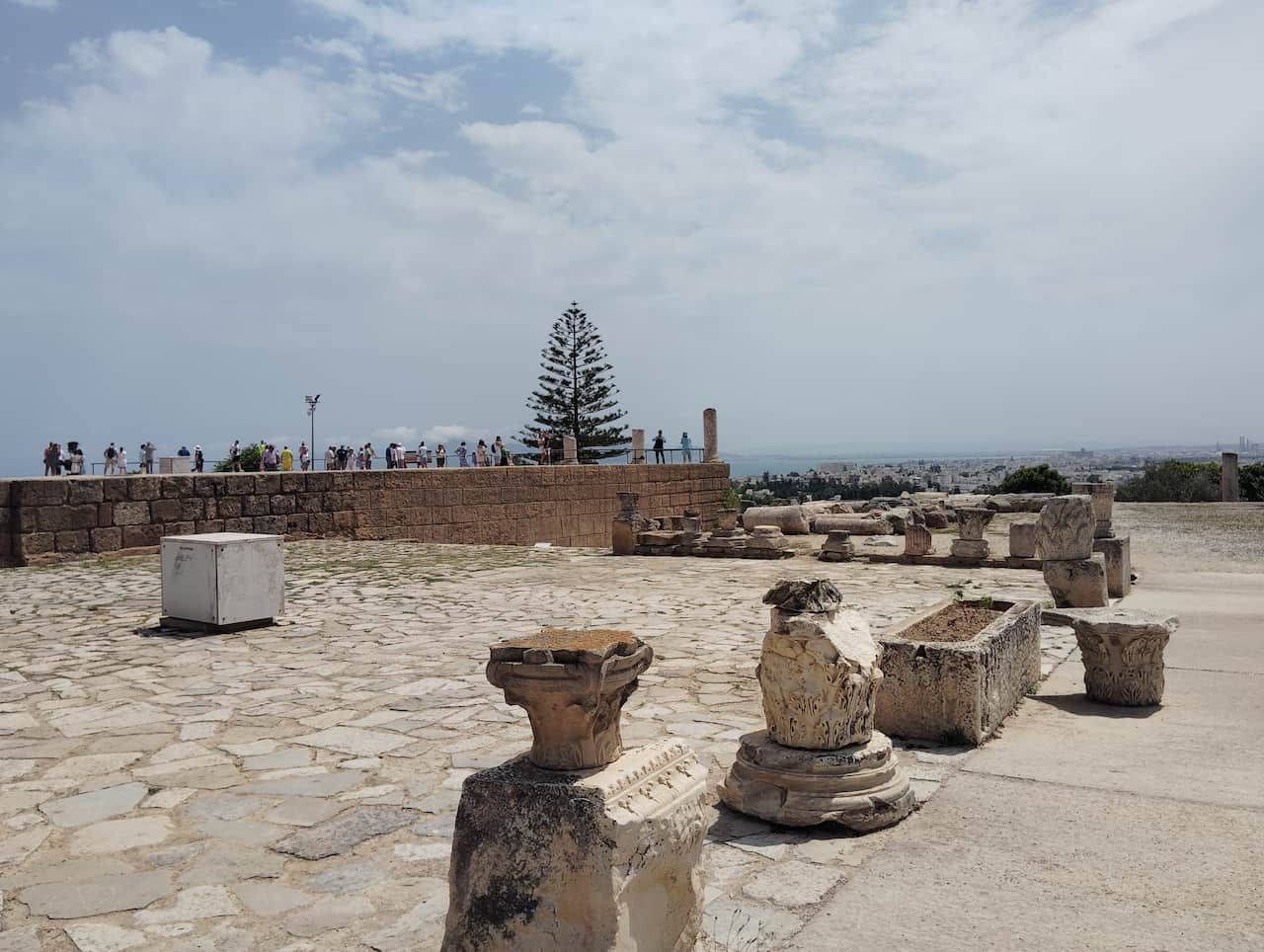
You might think the ruins in the photo are from Carthage—but in fact, they're not.
These were actually built by the Roman Empire after the beginning of the Common Era.
Carthage has experienced a truly fascinating history.
As mentioned at the beginning, the city-state of Carthage initially dominated and prospered along the Mediterranean, but after numerous wars with the Roman Empire, it was ultimately destroyed.
It was left in ruins, and to prevent any trace of its former glory from remaining, records and buildings were reportedly set on fire.
Although the area was once completely destroyed, the Roman Empire later recognized its prime location overlooking the Mediterranean and built their own city-state atop the ruins of Carthage.
As a result, most of what is visible today are the ruins of the Roman city-state, but if you dig below, you will find the remains of the Carthaginian city-state, creating a two-layered archaeological site.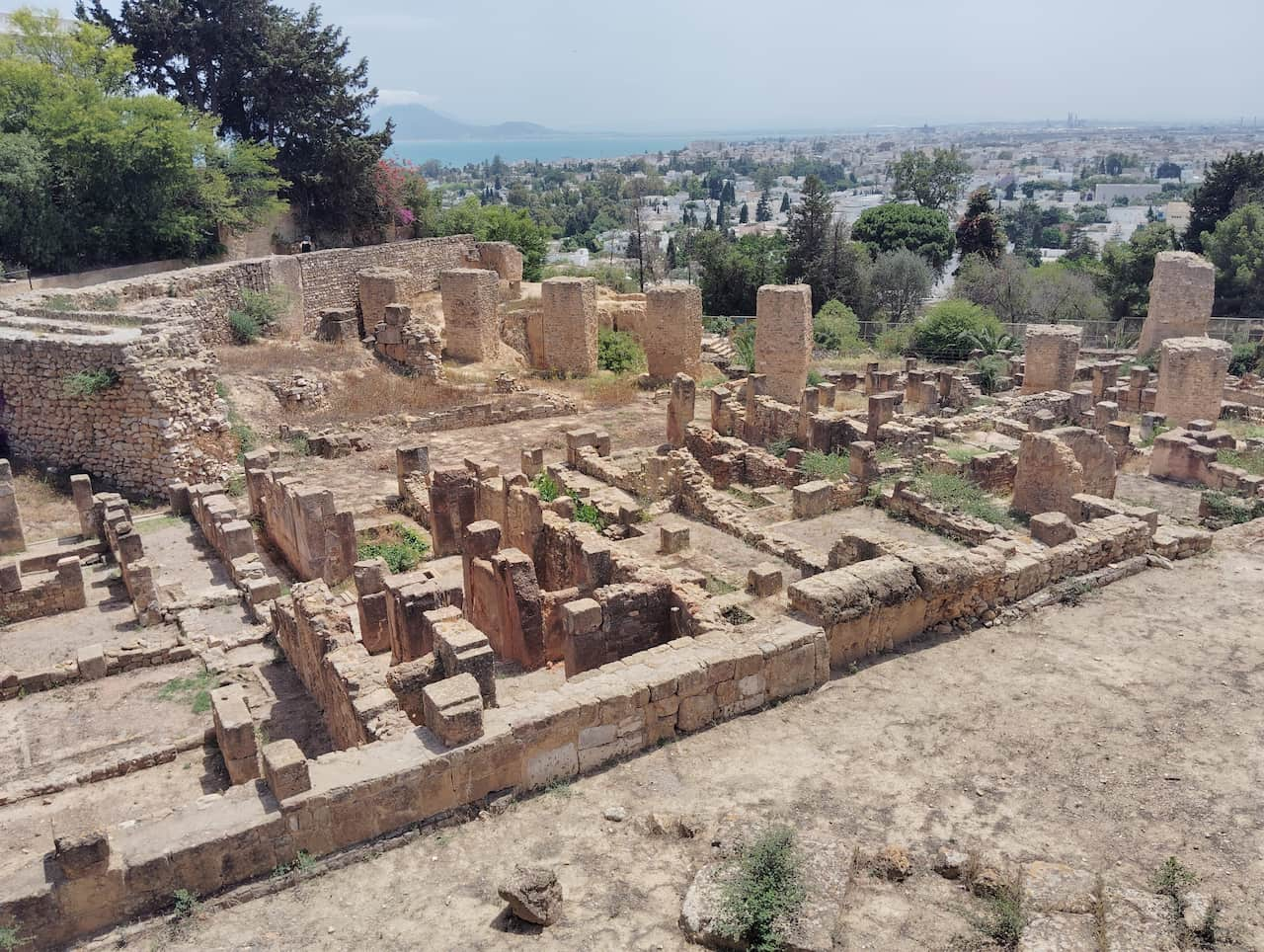
Even more fascinating is that after the fall of the Roman Empire, the remaining marble was taken across Tunisia—some of it stolen—and used in the construction of mosques and other buildings.
As a result, only parts of the foundations and broken columns remain today, and to be honest, there were few truly impressive sections left.
However, the history shared by our guide was absolutely fascinating, and I enjoyed this site more than almost any other ruins I have visited.
Ancient Roman villa
Next, together with our guide, we visited an ancient Roman villa.
In Japanese, 'villa' often means a vacation home, but here it refers to the residential area of the wealthy in those days.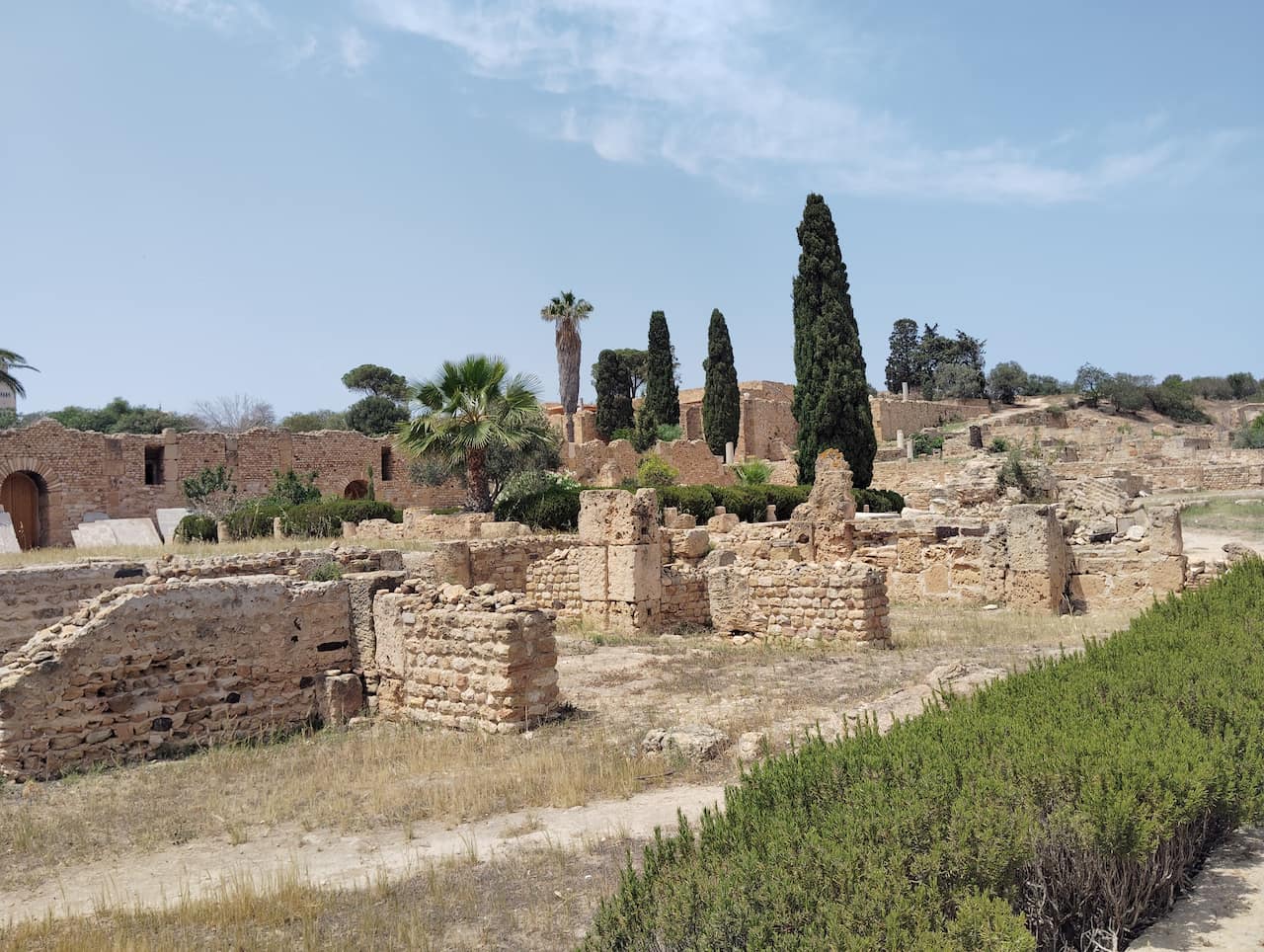
The guide explained, 'This is the entrance, and this is the courtyard,' but the house was so large it was hard to believe it was a residence.
Just the entrance alone was about the size of a typical home's living room.
There were also precious mosaics, characteristic of Tunisia, everywhere you looked.
From the mosaics covering the entire floor—some depicting only birds—you could tell the homeowner's tastes.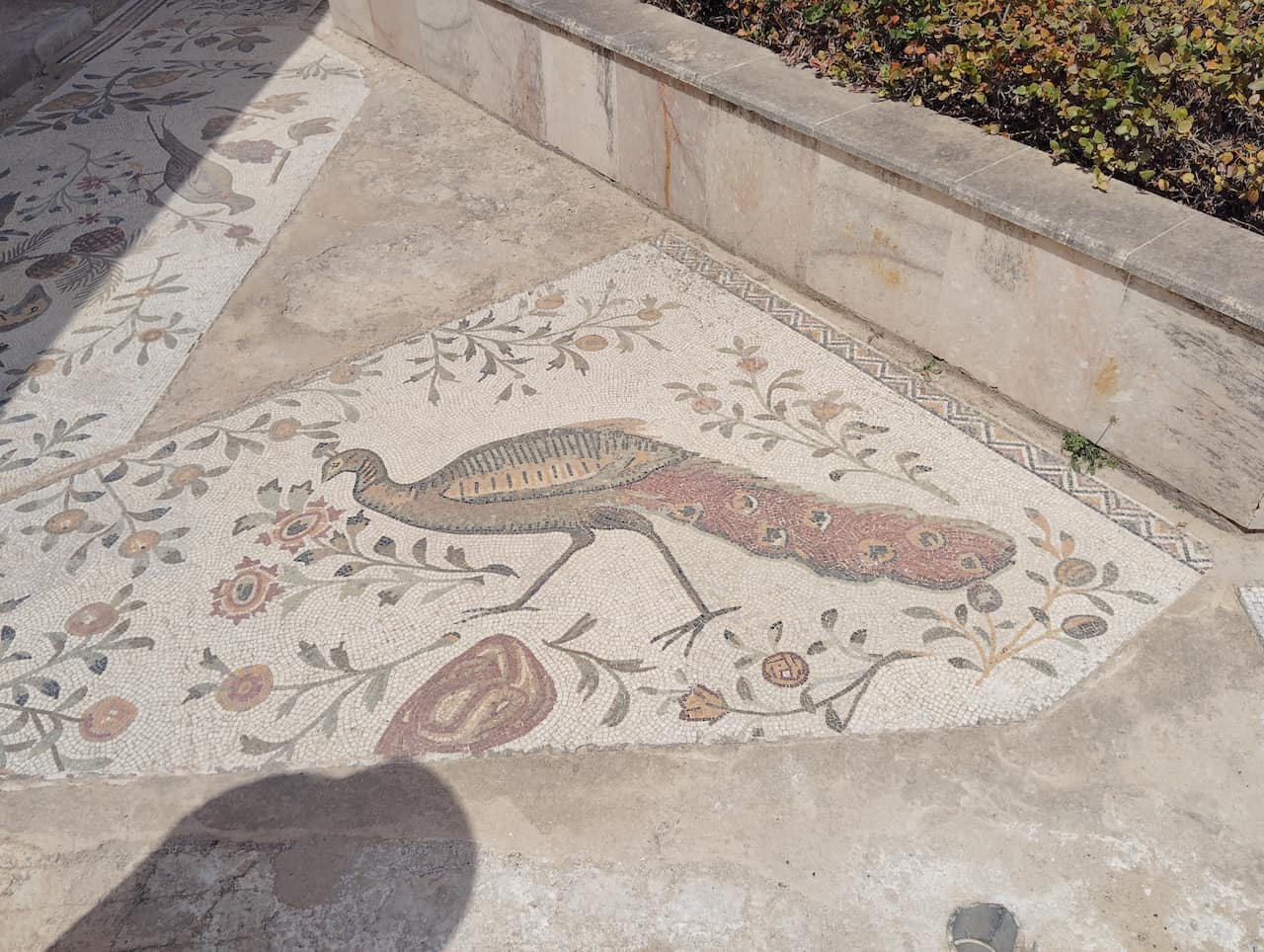
Even more valuable pieces are on display at the Bardo Museum in the capital, Tunis, so I highly recommend visiting there as well.
Tophet's Graveyard
Next, we visited the Tophet cemetery, a burial site for child sacrifices.
This site dates back to the Carthaginian city-state era, and each stone on the ground marks an excavated grave.
Sacrifices were performed as rituals to express gratitude to the gods or to pray for their blessings, and were especially carried out during significant events such as seeking bountiful harvests, rain, or victory in war.
It is believed that newborn boys were especially chosen as sacrifices and, through cremation, were sent to the gods as sacred beings.
Antonine Baths
The last place I visited was a public bathhouse from the city-state era of the Roman Empire.
It was built by Antoninus Pius, one of the Five Good Emperors well known in world history.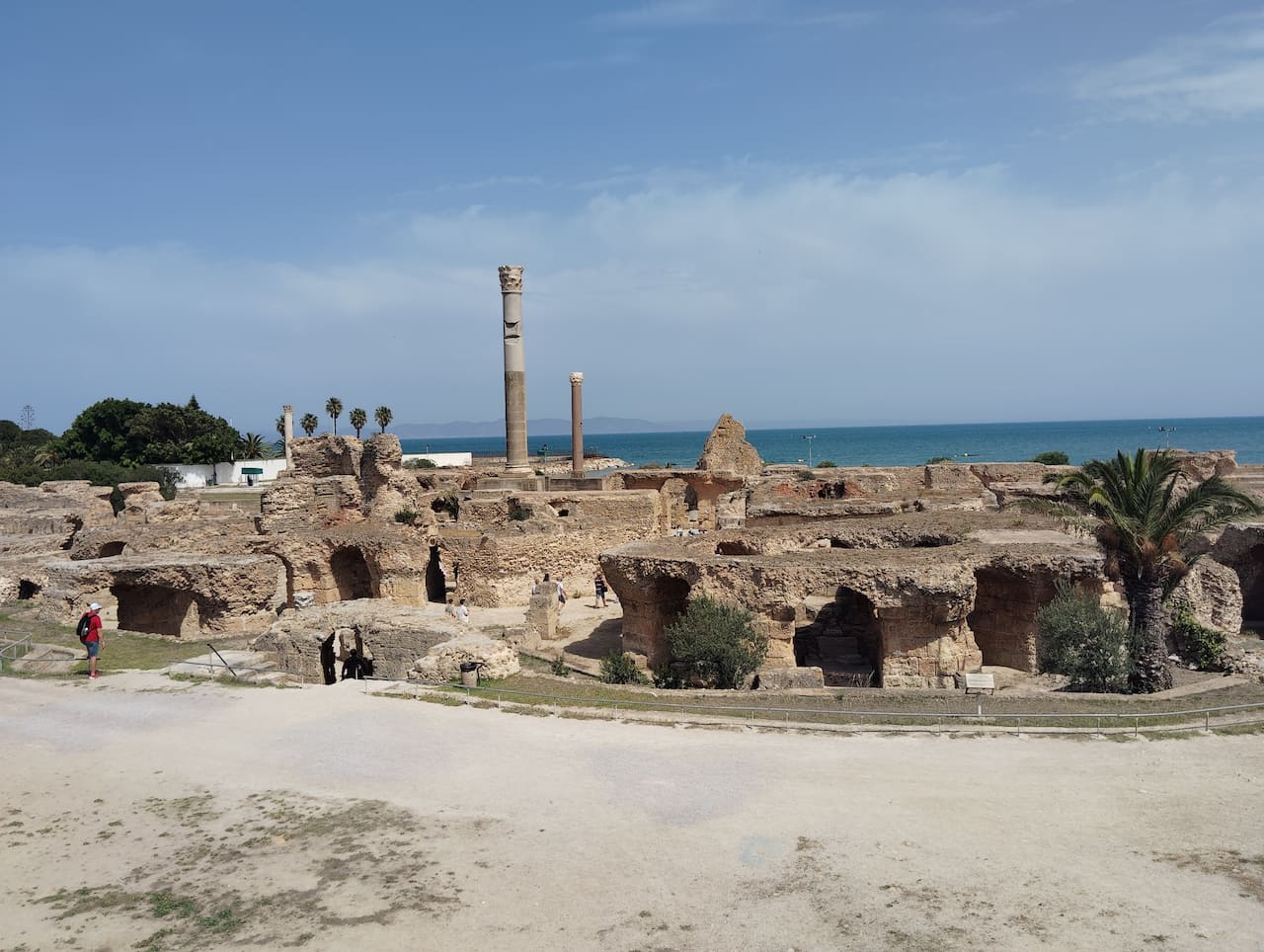
The guide said, "This is an easy place to explain to Japanese people—it's like an ancient super sento!"
Indeed, that makes it very easy to understand.
There were changing rooms, hot baths, cold baths, and even a sauna.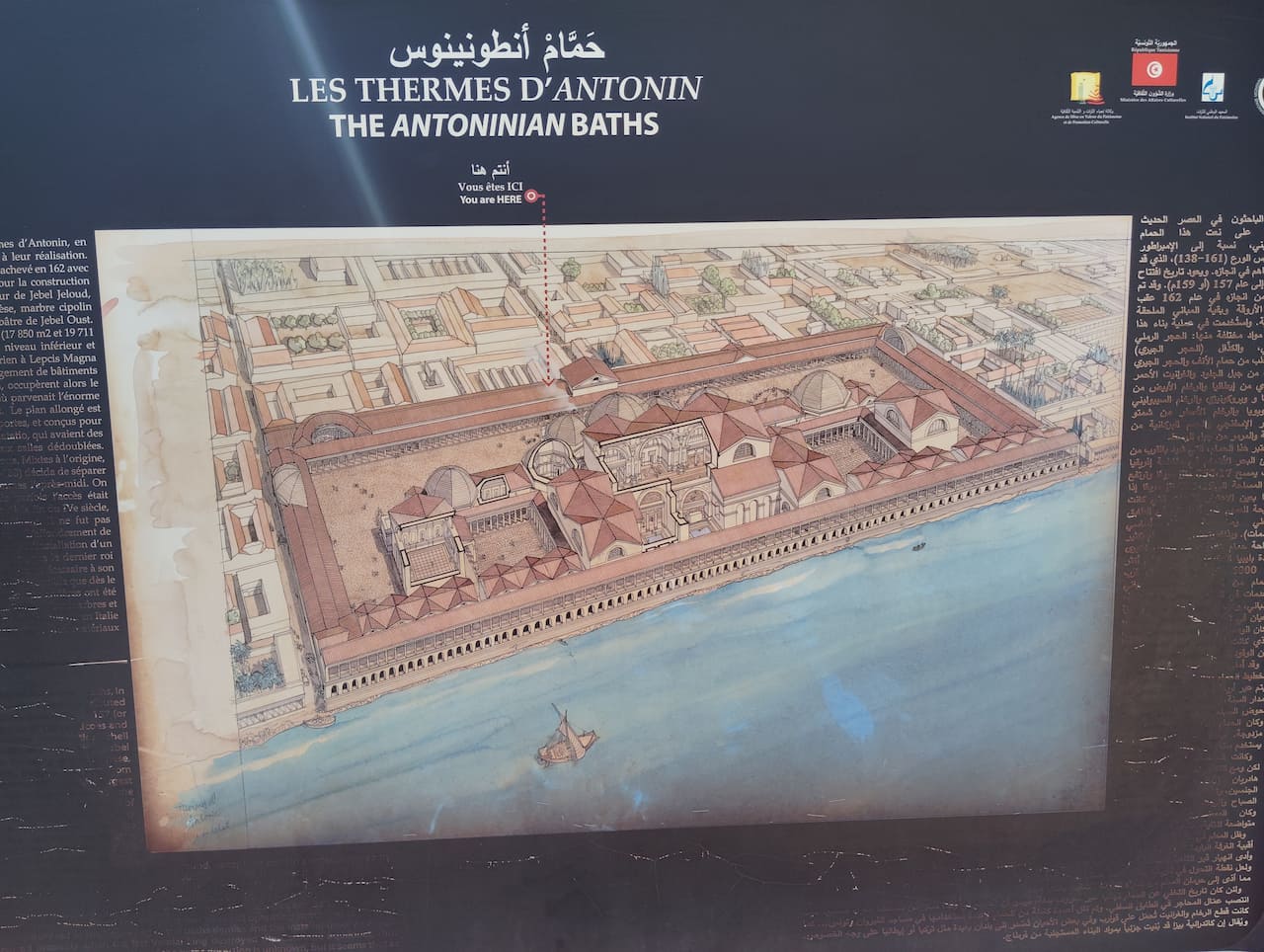
Furthermore, the Roman version of a super sento even had a library and a pool.
What set it apart from the Japanese super sento was its sheer size.
With a total area of 35,000 square meters, a length of 200 meters, and columns 8 meters high, this enormous bathhouse is the third largest in the Roman Empire.
All that remains today are the foundations of the underground spaces where slaves used to heat water and do laundry, but even this area alone had wide corridors and high ceilings, making it feel very spacious.
I felt that perhaps even the slaves found it a more comfortable environment to work in compared to other places.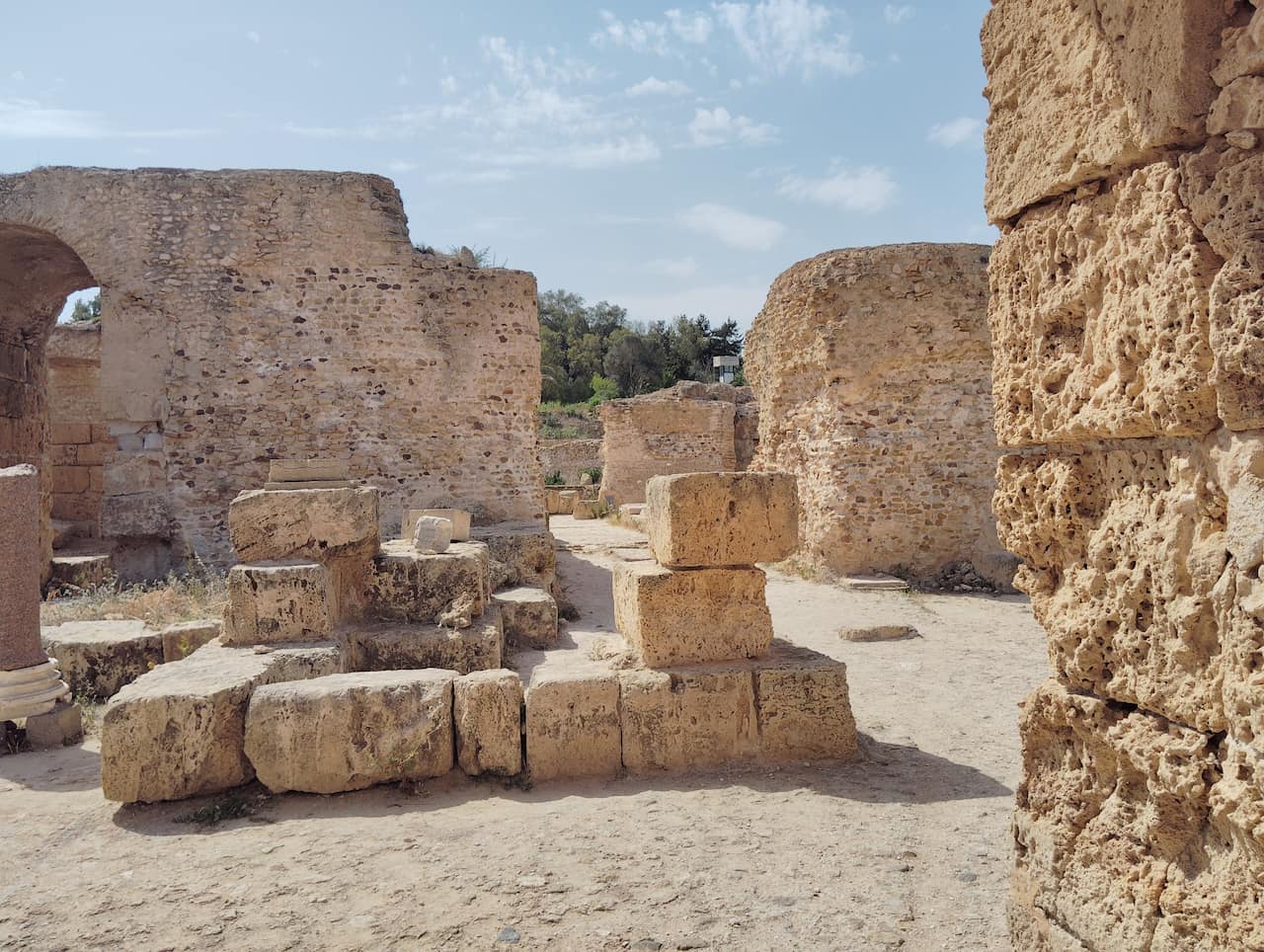
When visiting the Carthage ruins, I highly recommend joining a tour with a guide rather than going on your own.
The informational signs at each site are not very comprehensive, and if I had visited alone, I wouldn't have been able to discover just how fascinating Carthage is.
Since the main attractions are spread out and somewhat difficult to reach on foot, joining a tour reduces the burden of getting around.
A guide will also support you in terms of safety, allowing you to explore Carthage with greater peace of mind.
Writer
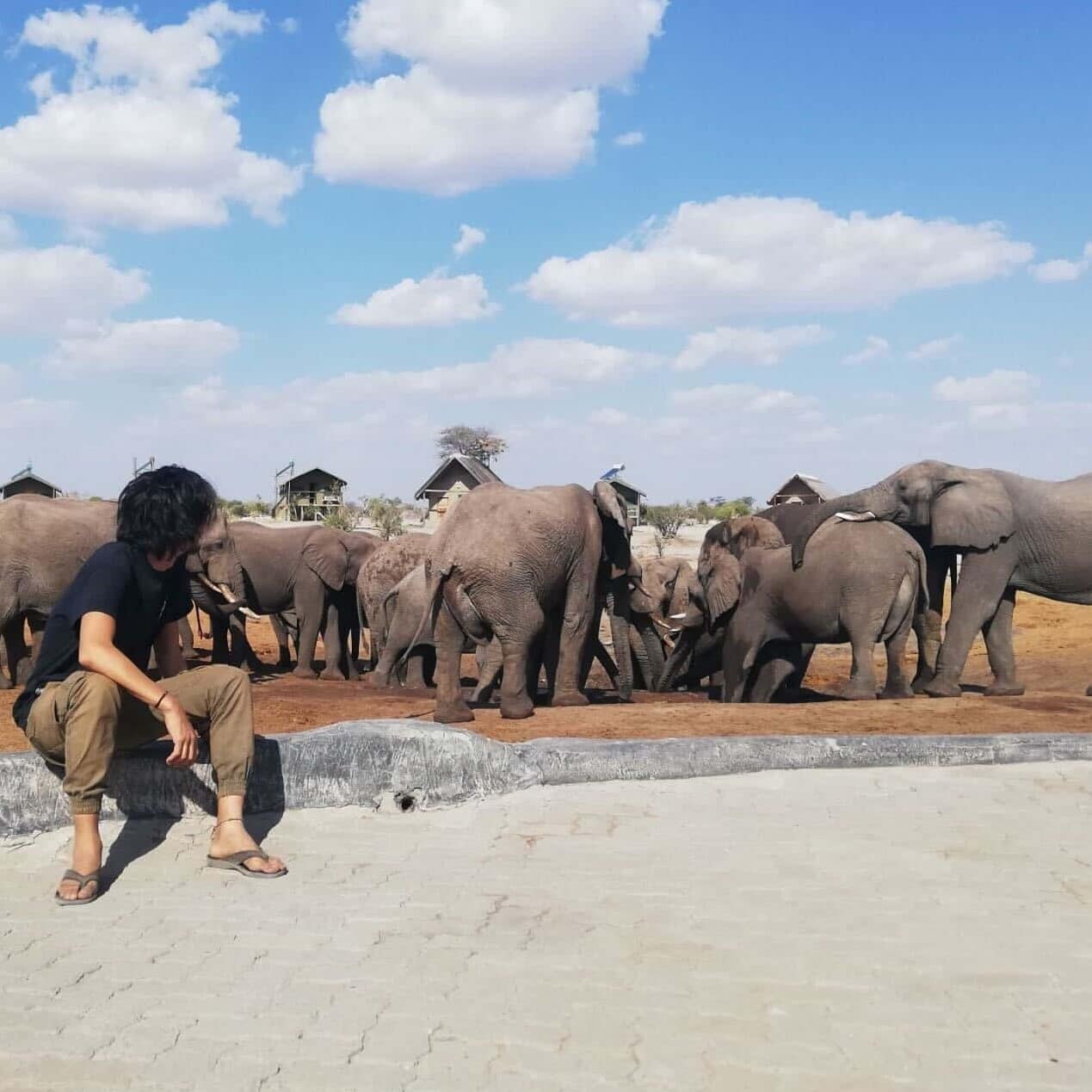
Mamo
Information site: "Zoo-tto Tabi Shiyou!" / Instagram / Twitter
A traveler seeking to meet animals around the world. Has visited 52 countries abroad and all 47 prefectures in Japan. As a child, dreamed of seeing African elephants on the savanna, and joined their first safari in Tanzania as a university student. Since then, has become passionate about journeys to observe animals, visiting over 100 national parks, zoos, and animal-related facilities. Has traveled around the world.